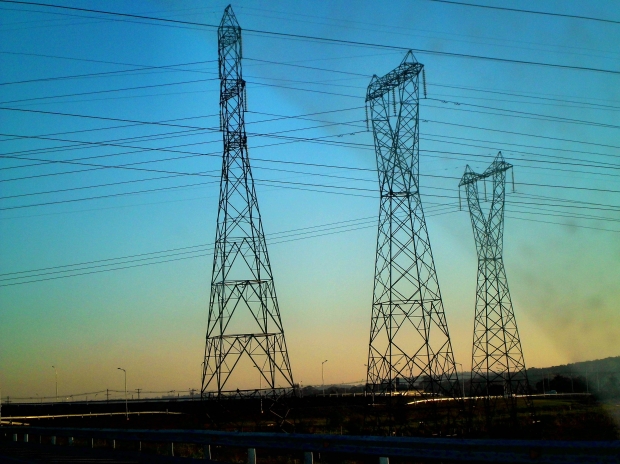
Ecology can also be less visible. The soil is a good example of this: There is so much life in that brown material beneath our feet, but since we live on top of it, soil life can be difficult for us to visualize.
Sometimes, ecology is invisible.
What forces guide monarch butterflies as they migrate to a place they've never seen? When animals interact with the Earth's magnetic field, these invisible influences play a big role in animals' behavior.
Many animals can sense the Earth's magnetic field
How do you navigate through your everyday life? You likely use landmarks such as street signs or buildings. If you're not relying on a device to keep time, you could use the sun's position in the sky to tell you the time of day, and unless you live near the Arctic Circle, the presence of light or dark tells you whether it's day or night.
Humans use many environmental cues to tell them when and where to move, and for a long time, scientists thought that animals relied on similar environmental cues to find their way around.
However, in 1957, a Frankfurt scientist named Hans Fromme noticed that the robins he'd placed in a cage were getting restless. It was fall, and they kept on moving to the southwest part of the cage. Why were they doing this? Yes, the robins in Germany migrate to Spain to the winter, but their behavior puzzled him: these robins were in a closed room, without the sun or the stars to guide them.
They could not tell that it was fall, and they could not use the position of the sun and the stars to tell where Spain was. He decided that they must be using the Earth's magnetic field to guide them in their attempted migration.
How animals navigate
Just as we might use street signs, a GPS, and a map to navigate our way around a city, animals use multiple means of navigation. They use environmental clues such as temperature, light levels, and the availability of food sources to trigger migration. They use the sun, moon, and stars to help them make their way to breeding grounds.
Some animals use landmarks to show where they should go, while others such as salmon use the smell of a particular river to guide them home. While they usually use it together with other navigational methods, animals also use the earth's magnetic field as their compass.

Since Fromme's time, many experiments on animal behavior have determined that organisms as diverse as bacteria and hamsters can detect the intensity of the Earth's magnetic field and the angle at which it intersects with the Earth.
The most visible interaction between animals and the magnetic field comes every year as animals migrate from cold to warm climates and back again. To navigation-challenged humans, animal migration can seem almost magical.
How do animals like salmon, leatherback turtles, butterflies, and hummingbirds manage to migrate thousands of miles? It turns out that it's not magic at all: it's an invisible ecological interaction.
An inner compass is very important to migrating animals, particularly on days when it's overcast and hard to navigate using the sun or the stars.
In a 2014 study of monarch butterflies, researchers from the University of Massachusetts Medical School discovered that migrating monarchs orient themselves to the south - even in the absence of cues from the sun. This means that even when it's overcast, butterflies can continue moving southward to their winter home.
An alignment with the magnetic field can also help organisms move within their immediate environment. According to Kirschvink and Diaz-Ricci's work published in the Bioeletromagnetics Supplement, magnetotactic bacteria align with the Earth's magnetic field to seek out the area between mud and water in their aquatic environments. This is the best place for the bacteria to live.
Animal magnetoception: Where is this built-In compass?
When humans use a compass, it's visible in our hands. If animals have a compass, where is it? For a long time, studies of animal behavior showed animals aligning themselves with the earth's magnetic field, but no one knew exactly how they managed to figure it out. However, research has discovered that many species contain small quantities of magnetite, the same material used in the ancient lodestones that humans used to guide their journeys.
In 2012, research published in the Proceedings of the National Academy of Sciences discovered that rainbow trout have a good nose for figuring out directions. In their olfactory system, the trout have some cells that contain tiny quantities of magnetite. Researchers isolated these cells by looking for cells that aligned with the magnetic field and discovered that the cells contained magnetic components.
While people have not studied the magnetoreceptor anatomy of all animals that migrate, many organisms - including humans - contain particles of magnetite within their bodies. In the case of the magnetic bacteria, the bacteria contain magnetosomes, particles of magnetite or iron sulfide tucked into their cells.
It seems that animals that use the magnetic field to navigate may come with a built-in compass, but there may be more than one type of compass. The bodies of animals such as birds and the fruit fly contain proteins called cryptochromes. When these proteins are exposed to blue light, they form molecules with electrons that spin in specific ways depending on the earth's magnetic field. Researchers think that these cryptochromes could help some animals navigate.

Humans have an impact on so many aspects of the earth's ecology. While wrangling with the magnetic field might seem like an activity that is out of our reach, human-induced electromagnetic noise could be a concern for migrating animals.
In a 2014 study published in the journal Nature, laboratory studies on robins showed birds that were exposed to background electromagnetic noise had trouble discerning which way was south.
While other studies have not seen the same impact from everyday background noise, it's prudent to be aware that human-induced electromagnetic disturbances could have an impact on some animals' highly-tuned sensory systems.
Animal navigation: Migration and the Earth's magnetic field
Animal navigation has long fascinated humans. We enjoy watching the geese migrate overhead as fall approaches, but for a long time, no one knew how they managed to find their way.
While it's not completely clear how all animals navigate using the Earth's magnetic field, recent investigations of animal anatomy have drawn us closer to the answer to this perplexing question.



With the pole shift the animals lose their ability to navigate. Animals that are specific to certain regions showing up in the oddest of places. Sea creatures that would use their magnetic maps to avoid certain areas undersea going straight into them, some resulting in death. At a critical point there may in fact be a visible indicator with animal behaviours, a confusion of sorts on their part. Just like in the movies and in real life (Jakarta for instance) when the animals run...you run. "Dumb animals" know far more than we do.